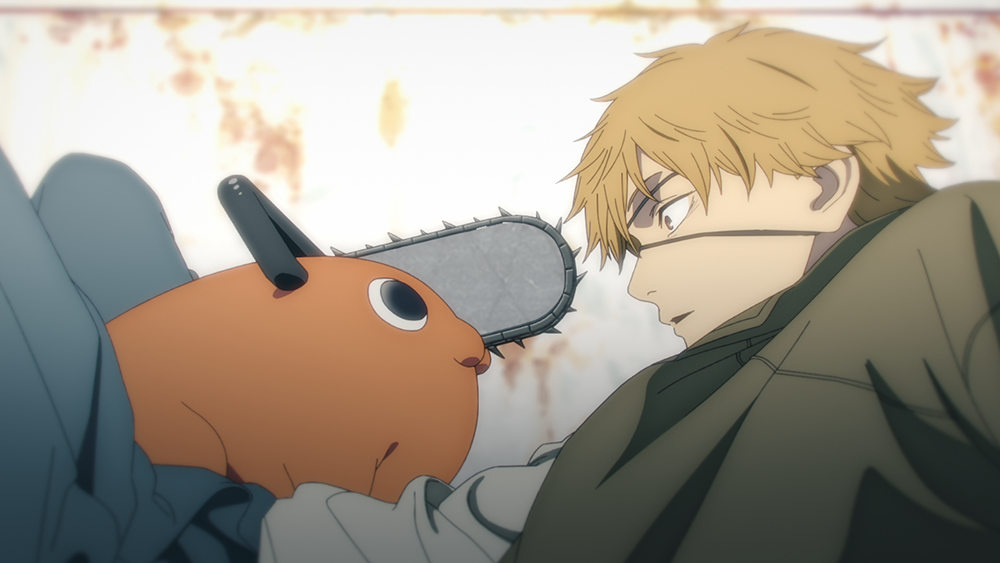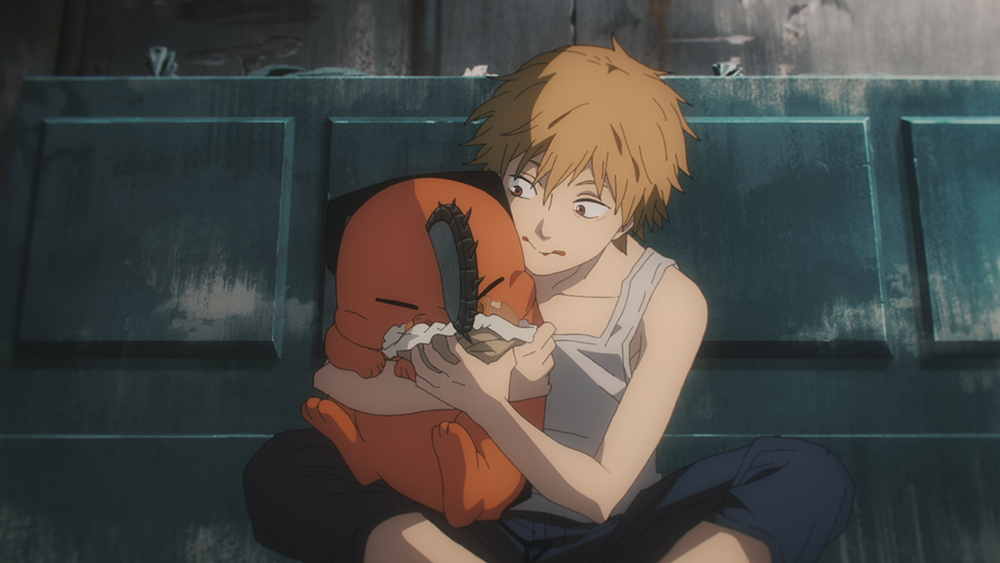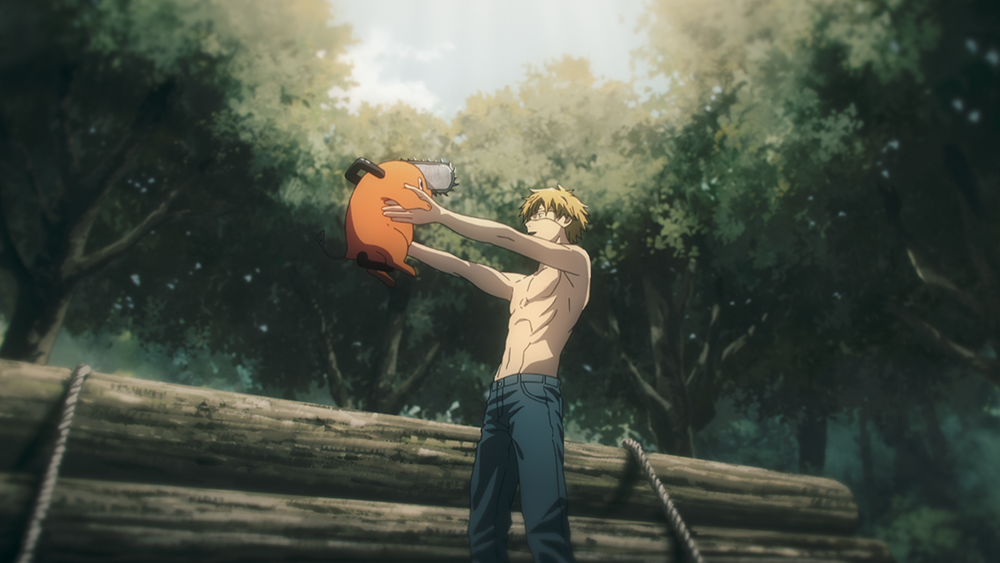
Chainsaw Man is full of unique and fascinating characters, but maybe the most iconic is Denji’s tiny companion Pochita! Even though he isn’t in the majority of episodes, his uniquely lovable design and adorable charisma has endeared him to anime fans all around the world. But what exactly… is he? He’s a devil and he has a chainsaw, but how exactly does this creature’s anatomy work? Well, we had the opportunity to talk with wildlife biologist and activist Che Frausto about Pochita and he gave us his opinion on how exactly this little creature is built!
NOTE: This article is based on an external expert’s opinion and does not reflect the actual character in question or any canon in-universe facts.
Che Frausto, in his words, is, “a wildlife biologist living on Maui, Hawaii which is, unfortunately, the extinction capital of the world. I created my own line of educational coloring books. I thought I could build more of a bridge between the community and conservation that way.” Frausto’s nonprofit organization Advance Wildlife Education has published over 20 different books focusing on topics including sharks, marine mammals, the domestication of the wolf, and even dinosaurs, all featuring his own artwork. Frausto is also a lifelong anime fan, having devoted much of his time since the COVID-19 lockdowns started watching series like Dr. STONE and Black Clover, making him a perfect choice for leading us through an exploration of how Pochita’s biology might function if he existed in the real world.

Initial Biological Analysis
After being shown an image of Pochita for the first time, Frausto walked us through an imaginary scenario: he’s walking around Maui and came across an animal resembling Pochita in the wild. His initial thoughts were that the creature wouldn't seem to be aggressive and that, besides the chainsaw protruding from its face, “it’s pretty cute.” On a very basic level, he said he would classify Pochita as a yet-to-be-discovered smaller breed of dog.
He went on to explain some of his further analysis. “So, there’s this syndrome called Short Spine Syndrome,” a mutation that affects the bone and cartilage development in the spine which results in a drastically compacted physical profile. “It looks like it has this. You can compare video footage of Short Spine Syndrome dogs and they just have no neck. They’re just kind of compact like this animal.”
Upon seeing a real-life chainsaw dog, Frausto stated he wouldn’t necessarily be intimidated by it if he came upon it in the wild. “I don’t know if I would run away. I’d probably want to check it out and learn more about it… Unless it was charging at me and displaying all-out aggression. Then I would probably dip.”
Anatomy Insights
When asked about how he would analyze Pochita’s various features through a biologist’s lens, Frausto started listing out anatomical points of interest. First, he noted that Pochita lacked ears and instead had multiple handle-like protrusions. “I would wonder if it would be able to hear another animal that was sneaking around it. Its sight would probably be heavily impacted by the chainsaw in the middle of its face, too.” Frausto was also puzzled over where its brain might be located since the chainsaw and muscles (or machinery?) necessary to move it would take up room in its skull.
“It oddly resembles a sawshark, this species of shark that has serrated teeth on a shaft on its face. It swishes its head around to cut up its prey. That’s how it defends itself, too. It’s oddly similar to that.”
Frausto also ran through how exactly a functioning chainsaw could exist within an animal. He brought up the point that Pochita’s blood would need to have combustible properties to propel the chainsaw if it functions even remotely like a consumer grade chainsaw. “They [chainsaws] also get really hot inside, so there would need to be a way to prevent its own internal organs from getting cooked [...] I’m also interested in how it would sharpen the chainsaw. It would definitely get dull after continuous uses. There was an aquatic dinosaur with self-sharpening teeth — every time it would open its mouth, the teeth would rub against each other and in that way get sharpened.” He ran through several other possible scenarios including Pochita sharpening the chainsaw on rocks or trees or molting old chains off and growing new ones in.

Diet and Habitat
On the topic of Pochita’s diet, Frausto said, “I assume with the chainsaw that it would be a carnivore with a diet of small rodents. Maybe an omnivore because I could see the saw also being used to cut down plants that have stalks.” When imagining Pochita on the hunt he laughed, saying, “it would just be really funny! It can’t really turn its head, so if it’s chasing you, it would be so easy to get away.”
Frausto also had a bit of insight when it came to other uses for Pochita’s saw: “I could also see the saw being used like a woodpecker uses its beak. It could be used to burrow, maybe cut cavities into trees for shelter.”
Weaponized Cuteness and Other Points of Interest
If there were other members of the species, Frausto wondered, “what happens when it gets older? Do they get bigger, do their faces change shape? Evolutionarily, sometimes animals increase their rate of survival through cuteness. Keeping those features can be a survival tactic. You’ll see that in mammals some animals will adopt members of a different species — cats will take in puppies or dogs will take in kittens — it all has to do with cuteness activating maternal instinct. If [Pochita] is young for its species, and it was separated from its parents, it wouldn’t be taken care of the same way if it looked more mean or aggressive.”
Frausto remained stumped on one particular point, however. “Since there’s a handle in its butt… I really don’t know how it goes to the bathroom. I guess that’s what’s so great about anime, though. You can have any sort of animal you want and you don’t need to worry about the specifics of how that would work in real life.”

Che Frausto is a wildlife biologist and conservation activist who runs a nonprofit organization called Advance Wildlife Education. Combining his lifelong passions for art and nature, his organization publishes educational coloring books that aim to bridge the gap between the work he does on the field and the wider community. Frausto also frequently visits schools to give presentations on wildlife conservation in order to inspire students to become involved in conservation work.
You can learn more about Advance Wildlife Education and purchase their educational coloring books (published in English, Spanish, and Japanese) at their website here.
You wach Chainsaw Man right here on Crunchyroll!
---
Source: Latest in Anime News by Crunchyroll!

Comments
Post a Comment